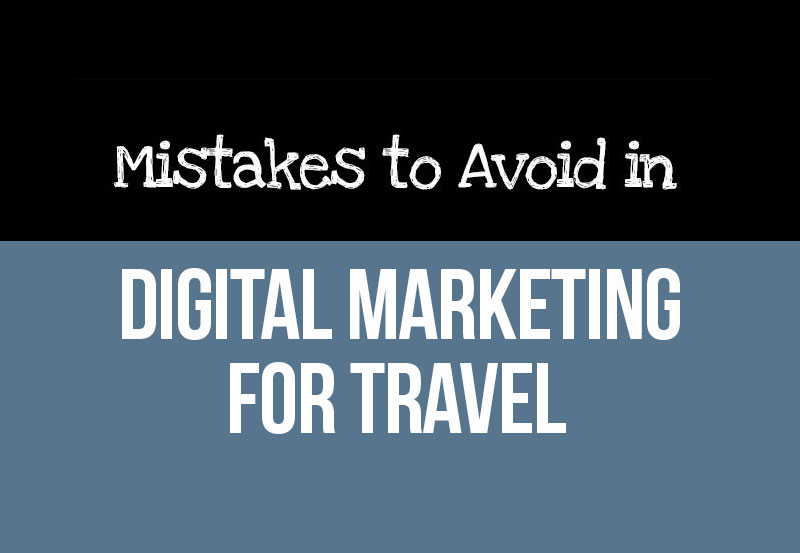SEO Case Study: 7 Steps to Increase Organic Traffic by 200%
Want to get better rankings on Google? Of course you do!
However SEO is a complex beast and it can be hard to know where to focus your time to bring the best return.
In this case study, we’ll show you how we implemented a custom SEO strategy for one of our clients, and the results delivered.
Our case study provides actionable takeaways, following a simple and repeatable SEO strategy.
Any business can use this format to rank for a wide range of target keywords and drive more qualified traffic from search engines.
As can be seen below, the business is now ranking for over 50k more organic keywords:
Source: AHrefs
The process delivered an increase of almost 200% in high-quality organic traffic:
Source: Google Analytics
The Challenge
The client is a well-known magazine publisher, focused on travel, who were looking to increase the increase their Google visibility and make search a more important part of their traffic.
There was a clear need to improve their SEO performance and the increase the number of visitors coming from organic traffic.
We were challenged by the client to…”make it rain”!
Whilst Google search offers the potential to unlock a vast amount of additional traffic (the “rain”), for any client, the approach needs to be focused on sustainable, long-term growth.
Although the brand was a regular content producer, the articles published were not effectively optimised for search engines, resulting in limited organic traffic.
The challenge was:
- Identify and resolve technical SEO issues
- Cleanse the existing link profile
- Enhance the link profile using high-authority in-bound links
- Increase the overall Domain Authority
- Improve organic rankings in Google
- Increase overall organic traffic
SEO Strategy – Step-By-Step Process
The goal with this case study is to introduce you to a range of new ideas which will help you to expand and improve your SEO performance and better serve your customers.
The approach that I will detail saw our client grow their organic traffic by almost 200%!
Step 1
Technical Audit
Any new SEO project needs to start with a focus on resolving any outstanding technical SEO issues.
Issues with the indexability of a site can cause fundamental obstacles to your ability to rank well for important search terms.
While your site is being crawled, search engines are checking a range of key areas including how secure, fast, and easy-to-use your site is.
Each search engine has its own algorithm, and algorithms get improved with regular updates.
When you conduct an audit, you are checking the SEO health of your website.
What is healthy one year can quickly change and therefore SEOs or in-house marketing teams need to keep up-to-date with an ever-changing landscape.
The core elements of a technical audit include reviewing both content and technical performance.
Back-end
- Optimising site speed (hosting and image compression)
- Reviewing the XML sitemap (submitting to Google Search Console)
- Ensuring a logical site hierarchy
- Review robots.txt file (adding XML sitemap if missing)
Front-end
- Removing duplicate content issues
- Identify issues with internal links
A technical audit is crucial to ensure key issues are highlighted and resolved.
There are a range of SEO Tools available to help with technical audits.
Those we mainly recommend are:
- Google Search Console
- SEM Rush (technical audits, rank tracking, link audits)
- aHrefs (technical audits, rank tracking, link audits)
- Screaming Frog (site crawls)
- Google Speed Test (site speed test)
- GT Metrix (site speed test)
You may need to get some help with understanding technical issues, however this step is an important first step with any SEO project.
Technical Audit – Summary
- Technical audits ensure that any issues which inhibit SEO performance are resolved
- You will likely need a developer to assist with back-end SEO developments
Step 2
Keyword Research
Keyword research is a crucial next step to understanding the current SEO performance and the potential keyword opportunities.
There are a range of keyword research tools available, although the most popular is Google Keyword planner.
Understanding the scope of keywords which are most relevant to your business, and their average monthly search volume, gives you the knowledge to effectively optimise your website for search engines.
The starting point for your keyword research in PPC should be the landing pages for your products or services.
The aim is to identify the most important keyword to target with each landing page, considering both keyword volume and conversion intent (the search intent behind the user’s search).
You can research in 2 key ways:
- Search for new keywords
- Get search volume and forecasts for an existing keyword list
To find new keywords, use Google Keyword Planner to add words, key-phrases or your site URL.
You’ll get the following data:
- Exact monthly search volumes (or volume range depending on PPC spend)
- Level of competition
- Top of page bid (the equivalent cost-per-click through Google AdWords)
The other option, if you have a pre-existing keyword list, is to upload the list into Keyword Planner to identify those with the highest search volume.
Researching your current rank for relevant keywords will help to identify ‘low-hanging fruit’. These are keywords ranking just off the first page of Google.
Once you have a better understanding of search volume and your current ranking performance, you will be able to identify keyword opportunities.
Look to identify as many relevant target keywords with search volume as-is possible before moving onto step 3.
The more data you have, the more informed your on-page decisions will be!
Keyword Research – Summary
- Keyword research is key to effective SEO
- Identify keywords offering strong search volume
- Look for keywords with conversion intent (i.e. ‘family holidays’)
Step 3
On-Page Optimization
Once relevant keyword opportunities have been identified, it is important to ensure that there is a unique landing page optimised for each target keyword.
On-page optimisation is a crucial component of SEO, ensuring that landing pages have the best chance of ranking strongly in search engines.
Using your keyword research, the aim is to identify which is the most relevant landing page for each target keyword.
Effective on-site SEO optimisation is primarily focused on ensuring the Header 1 (H1) and page title are aligned in focus on the chosen keyword.
This process provides clarity to Google, giving you the best chance of strong organic rankings.
Having unique pages focused on specific target keywords also ensures that there is limited risk of keyword cannibalisation (two landing pages competing for the same keyword).
On-Page Optimisation – Summary
- Keyword research is key to effective SEO
- Identify keywords offering strong search volume
- Identify the most relevant landing page for each target keyword
- Look for keywords with conversion intent (i.e. ‘family holidays’)
Step 4
Cleanse Link Profile
An important step in delivering strong SEO performance is ensuring the overall link profile is healthy.
A healthy link profile is one which includes no ‘toxic’ links.
Links identified as toxic need to be disavowed in Google Search Console.
This process confirms to Google that you are aware of the link, however you do not wish for this link to be considered part of your links profile.
Disavowing poor-quality links is an essential part of giving your site the best possible chance of improving your SEO.
Note: The disavow process needs to be carefully reviewed as this can severely influence your ranks if not managed correctly.
Cleanse Link Profile – Summary
- Audit existing link profiles – Identify toxic links
- Submit disavow file to Google Search Console
- Treat disavow submission with caution (don’t be over-zealous)
Step 5
Internal Linking
Once we completed a technical audit and solved key on-page optimisation issues, we need to think about improving the internal link structure.
Bounce rate is an SEO ranking factor, hence an initial focus was on creating clear calls-to-action (CTAs) and ensuring each page has a logical next step through relevant internal links.
This involved working with the internal team to ensure pre-existing blog content has links to core sales landing pages.
Key steps for improving content involve:
- Adding additional content
- Adding/improving imagery
- Adding/improving calls-to-action
- Adding additional internal links to key sales pages
Where possible, content relating to a specific destination or product should have an optimised link through to the relevant landing page.
Adding new links to content already live on the clients’ website was crucial in giving landing pages the best chance of ranking for competitive key-phrases.
Internal links are an increasingly more important part of SEO performance, therefore any time spent in this area is beneficial.
Internal Linking – Summary
- Internal links are an increasingly important part of SEO performance
- Links between related pages is crucial for overall performance
- Use optimised anchor text for internal links (aligned with your target keyword)
Step 6
Content Strategy
An initial starting point was to review the existing blog to ensure ALL content on the site is representing the client’s brand in the best possible way.
Generally speaking you don’t want pages with less than 500 words of original content being crawled by search engines. Ideally, content will have a minimum of 1,000 words.
Reviewing and improving existing content provides 3 main advantages:
- Increased content depth increases the possibility that each article ranks well in search engines.
- Improving the content to include clear calls-to-action (CTAs) ensures that ALL of your content is working hard to convert visitors into enquirers (and hopefully bookers)
- Adding relevant internal links (to appropriate sales-focused landing pages) improves the websites internal link profile, aiding overall SEO performance.
Ideally all content should be reviewed, looking to improve both the keyword focus, content depth and user engagement.
Key steps for improving content involve:
- Adding additional content
- Adding/improving imagery
- Adding/improving calls-to-action
- Adding additional internal links to key sales pages
- Change keyword focus, if required (based on keyword research)
As well as utilising existing content, we worked closely the internal content teams to ensure that there is a strategy in place for new blog content.
Essentially the aim is to add to the number of contextually-relevant articles and to create ‘topical clusters’ which can be thought of as groups of pages that talk about different elements of the same key topic.
Ensuring that the content matches the user-intent across the entire conversion funnel is a great way to build awareness of your brand as well as helping with link acquisition and visibility.
The content you produce should:
- Position your brand as an authority within your specific niche
- Be of sufficient depth to effectively cover the subject
- Contain internal links to key sales-focused pages
Your content plan should ensure that content is regularly being published.
A regular publishing schedule makes that the process is easy to manage, whilst also ensuring that Google crawls your site more frequently index new content.
Note: The more frequently your content is crawled, the quicker your search rankings are likely to improve.
Content Strategy – Summary
- Content is king – Create fresh content regularly
- The higher your keyword count, the better chance of your pages ranking well in Google
- Focus on answering customer questions and providing inspiration
Step 7
Link Profile Development
Your link profile is one of the most important elements dictating your ranking performance in search engines.
Both the number of referring domains (links from external website), as well as the quality and relevancy of the sites linking to your domain, are key contributors to your overall organic performance.
Whilst the above is true for any domain, it is essential to grow your domain’s backlink profile in a natural-looking way, especially if you have a limited number of pre-existing backlinks.
With little previous history, there is a higher risk of penalisation by Google if your approach is not careful.
An initial focus was on developing high-quality back-links to the homepage which use safe branded anchor text.
A focus on links to the homepage ensures that the link-development process appears natural and also benefits the overall Domain Authority of your site.
Improvements to the overall Domain Authority improves ranks across your all your pages, delivering an increase in both ranking keywords and organic traffic.
Link Profile – Summary
- Focus initially on links to your homepage
- Start by using natural anchor text (brand name and URL)
- Develop links from high-authority domains
- Aim for content-rich links (links in detailed blog articles)
- Start with a limited number of links per-month (ensure the link building rate looks natural)
The Results
Ensuring that the client’s site was effectively optimised for specific search keywords, whilst improving the internal link structure, has been fundamental to the results delivered.
Inbound links from contextually-relevant domains has improved the Domain Authority and the rankings for a wide range of pages.
Organic performance has been very strong, with a noticeable improvement in terms of keywords and almost 200% more organic traffic YoY!
Organic Keywords
A focus on high-authority links to the homepage improved the overall Domain Authority.
As a result of this process, rankings for a wide range of keywords have improved:
Source: AHrefs
Organic Traffic
Overall organic traffic has improved noticeably due to the increase in ranking keywords:
Source: AHrefs
As can be seen below, at the start of 2020, Google was delivering an increase of almost 200% in high-quality organic traffic:
Source: Google Analytics
Whilst the subsequent issues caused by Covid 19 has resulted in more limited value from the increased ranking positions, however once the market improves, the ranking positions deliver a stable flow of relevant search traffic.
Conclusion
Through this case study, we have illustrated the need to build content and back-links at a controlled pace, in a natural way.
The right content allows your brand to showcase expertise and authority within your niche, which increases your chances of ranking for tons of relevant keywords, both at the bottom and top of the funnel.
Talk To Us
Whilst your SEO performance is something which requires a hands-on approach, the best approach is to talk to the experts.
Advice tailored to your website, and your resources is crucial to achieving the best possible ROI from Google search.
Get in touch with us today for a FREE, no-obligation SEO Audit.
This will show your current performance and the potential opportunity through Google Search.
By continuing to use the site, you agree to the use of cookies. more information
The cookie settings on this website are set to "allow cookies" to give you the best browsing experience possible. If you continue to use this website without changing your cookie settings or you click "Accept" below then you are consenting to this.
























